| #ncte17 and the #ALAN17 workshop were great. I hope everyone who attended had a good time. I am enjoying the books even as we enjoyed family over the Thanksgiving weekend. I have too much to grade and work to do before the semester, but first things first. I finished E. Lockhart's Genuine Fraud a few days ago. Last night the narrative visited my dreams. In the dream, I received a cheerful phone call from someone who introduced herself as Emily. "Hi Steve, It's Emily." I know her enough to recognize her voice. I was sure it was her. As I waited for her to continue, I thought, Oh, no. Is this a Genuine Emily or a Fraud! Of Course, I woke up never to know if I was going to be roped into a new plot. Read Genuine Fraud. In the rest of this blog post, I feature colleague and friends who attended this year's ALAN workshop. It is becoming a tradition to report on the workshop by letting attendees briefly write about a favorite event, speech, chance or planned meeting, or that new book you just can't put down. I appreciate the time and effort that everyone has put in so that this post can be finished so quickly after the Thanksgiving break. Many of those who have responded, have classes to teach, students to nurture, books to read, papers to grade, and those final end of the semester meeting to attend. Whether you are in middle or high school setting or moving through the hallowed halls of a university, keep your chin up as you work towards the break. |
Victor Malo-Juvera
Dr. Marshall A. George
For me, the theme of this year’s ALAN Workshop is the importance of recognizing and honoring the humanity around us. This means, as many of the speakers, from Jason Reynolds and Brenden Kiely to Steve Sheinkin to Jewell Parker Rhodes, so eloquently reminded us, that we have to be willing to have difficult conversations and to push ourselves out of our comfort zones in order to ensure a more just and free world for everyone. As educators and as humans, we owe it to society, to our students, and to ourselves to engage in the topics that we might rather ignore, and I’m thankful to ALAN for reminding me of this and for providing the tools to help me do this.
Terri Suico
"More than once, the line for autographing at the ALAN Booth was so long that passersby asked, "Who's ALAN?" or "What books has ALAN published?"
This next one isn't an ALAN anecdote exactly, but another interesting thing happened to me. During NCTE, a friend told me that Sharon Draper was signing her newest(?) book,Stella by Starlight (2015), at the Simon and Schuster booth. My grandmother's name was Stella, and I was hoping to get a book for our eight year old granddaughter with a title including her great- great grandmother's first name.
When I left the ALAN booth, I found a very long line. The S&S rep told that I was the end of the line, and that they had run out of Stella by Starlight, but she could give me Draper's Out of My Mind instead. We had used Out of My Mind at the YSU English Festival in 2013 for 7th to 9th graders, so I would have to give the book with the condition that it might be too old for our Sophia.
Wrong. The day before Thanksgiving, I reluctantly offered Sophia the "substitute" Out of My Mind, and she squealed with delight: that was the book her third grade teacher had just started reading to her class, and they were only two chapters into it. And, when she saw that Sharon had autographed it to her, her eyes widened and her mouth opened in awe. For the next few days, I was able to watch the I-Pad set aside, displaced by a paperback book.
Of the thousands of book titles in that convention hall from all those publishers, whodathought?
Rick Williams
| I delivered a book talk during one of ALAN's Book Talk sessions. Neanderthal Opens the Door to the Universe by Preston Norton is an unforgettable story of finding your place in an imperfect world. Cliff Hubbard is a loner. His nickname at Happy Valley High School is Neanderthal because he's so enormous-6'6" and 250 pounds to be exact. He has nobody at school, and life in his trailer-park home has gone from bad to worse ever since his older brother's suicide.There's no one Cliff hates more than the cool quarterback, Aaron. When Aaron returns to school after a near-death experience he claims God gave him a list of things to do to make Happy Valley High suck less. And God said the only person that could help was Neanderthal. As they make their way through the List, Cliff feels like he's part of something for the first time since losing his brother. But fixing a broken school isn't as simple as it seems, and just when Cliff thinks they've completed the List, he realizes their mission hits closer to home than he ever imagined. Preston Norton brings an exciting, sharp voice to YA Lit. as he unravels threads about identity, bullying, oppression, microagressions and isms that plague a high school environment. Neanderthal is both heartbreaking and hopeful. Elsie Lindy Olan |
| Tyler Johnson Was Here is written by Jay Coles. Tyler and Marvin Johnson are twins, age 17, but they couldn’t be more different. Tyler is drawn into gang life in his community to help his mother pay the bills because their father has been in jail since they were 8 years old for a crime he didn’t commit. Marvin is applying to MIT because it’s the best place to study science, or so he hears. When a party turns into a gang shooting followed by a police raid the brothers are separated in the chaos Marvin returns home but it is increasingly clear that Tyler has disappeared a few days later an anonymous video turns up online showing Tyler‘s death: three shots from the gun of a local white police officer. Over and over, Marvin is forced to relive the trauma of seeing his brother’s death on the news and Twitter; he can’t escape it. He tries to hold the pieces of his life together with the help of his friends Ivy, G-Mo, and Faith, seeking justice for his brother’s death, while gathering proof that his brother’s, as well as his own, life matters. A powerful, visceral, painful read. This book is essential for every secondary classroom. Available in March 2018. I leave you to ponder the words of teen character Ivy, “ Who do you call when the cops are the bad guys? Who can you even beg to protect you?” Jenny Cameron Paulsen |
Mary Warner
During the Tuesday session, both Laurie and Chris spoke about the power of literature to help youth experience empathy. Laurie talked about how our brains' "mirror neurons" can be developed and strengthened easiest during childhood and and how reading books can help individuals relate more fully to their peers' experiences as well as their own. This reinforced my choice to include young adult literature in my college humanities courses (gen ed) as well as those focused on English Education.
Chris's ability to speak from his experiences as a teacher, therapist, and child protection advocate also centered a great deal on helping students develop empathy. He also spoke to the power of books' cultural and contextual relevance to students' reading practices. I volunteer with a non-profit organization that cares for troubled children, and Chris's insight reminded me of the why I spend time gathering YA books to share with the youth who reside at Teaching Family Homes of Upper Michigan. Regardless of why they are not living at home, they need books - to help them relate more successfully to others, to develop empathy, and to better understand themselves.
Seeing Chris and Laurie helped me as a person, a teacher, a researcher/author, and a community volunteer. I am grateful to ALAN for providing me with the opportunity to grow.
Kia Jane Richmond
Anthony Celaya
Jason Reynolds and Brendan Kiely, the Opening Speakers, spoke openly and honestly - along with Chris Crutcher and Laurie Halse Anderson - about the need to diversify ALAN's reach - the need to bring people of diverse backgrounds into our workshop - so that individuals who represent our diverse communities - are represented in our community of readers and teachers and leaders of young adult books....
Speaker after speaker called for 'authentic voices' to populate the works of young adult books - so that each read becomes a rallying cry for what is good and true and honest in the lives of young people.
I was reminded continually of the need for fresh voices - voices of young people, born today and tomorrow - so they can be the everyone 'call their own' - as each generation becomes the voice of what matters most in the lives of young people who are living on the edge of adulthood..
I was also reminded of the generous gift of friendship - of all those ALAN Members - who give so warmly of themselves - to each other and to our community of readers and teachers and authors - so that all kids - real kids and 'kids at heart' - can find books that speak- seemingly - just to them.
I applaud Laura Renzi, and her partner-in-crime, Mark Letcher for their remarkable and steadfast leadership to make this year's ALAN Workshop 2017 - an event to be remembered in mind and photos, forever...
Finally, I also applaud Lois Stover - this year's Ted Hipple 2017 Award winner - for her service and scholarship to the ALAN and the young adult literature community at large.
"A big congrats to Sean Connors - this year's ALAN Review Journal Article of the Year Award winner - for his outstanding scholarship....."
Jeff Kaplan
Kate Youngblood
Dr. Gretchen Rumohr-Voskuil
| ALAN17 was my fourth time (in the last five years) attending the workshop and it gets better every year. It is often hard to pinpoint one moment each year as a favorite because there are often so many great ones. I think the thing that I always marvel at when I leave is simply the people involved in this incredible workshop. Everyone is connecting with each other in different ways. Maybe it is meeting someone that you happen to be sitting by and making a new friend (on day 2 I happened to sit by a woman who worked in a school only an hour from where I teach). Maybe it is making a book trade with another teacher that connected with you through the Facebook page or Twitter feed. Maybe it is meeting an author that has made in impact on your classroom or an individual student. Whatever the case may be, my ALAN experience is always a great one because of the wonderful people involved, not only with being in attendance, but also with those who make these two days happen. Joe Godina |
Gary Salvner
| From learning that Chinua Achebe served on Joseph Bruchac's dissertation committee to Nic Stone reminding us that, "It only takes one voice to start the ripple effect" to Jason Reynolds' and Brendan Kiely's powerful keynote, there were so many highlights and golden moments during my ALAN17. During the "Speaking Out in a Time of Silence" panel, Angie Thomas encouraged teachers to teach the texts that make us look at ourselves differently and that force uncomfortable (but important) conversations. For me, the ALAN17 book and author which best allows that opportunity is Writing my Wrongs: Life, Death, and Redemption in an American Prison by Shaka Senghor. When we met Shaka at the ALAN reception, my friend recognized him from his appearances on The Daily Show and in the incredible documentary 13th, and this purposeful coordination of nonfiction subgenres (memoir, documentary, talk show) is one reason Shaka's work intrigues me. However, the main appeal of Shaka's work is the boldness of his message: even folks guilty of terrible crimes are not beyond redemption, and we've got to pivot from a "lock them up and throw away the key" mentality. Rather than being a "look how extraordinary I am" story, Shaka's memoir instead provides a possible blueprint for those currently incarcerated (whose numbers continue to skyrocket in a for-profit prison economy), of whom Shaka estimates that the vast majority are redeemable. As an English teacher, I am especially encouraged by the therapeutic value of writing for prisoners as well as the potential for the resulting literature to expand readers' understanding of modern mass incarceration. Jason Griffith |
As a classroom teacher with a diverse student population, I rely heavily on materials which are of high interest. Students often check out when the material doesn’t reflect their own experiences and background. Dante and Aristotle are both boys who are of mixed identities, gay and latino. A significant number of my students are openly gay or have someone in their lives who has suffered discrimination. Reaching out to the students after reading a chapter and connecting the text to self has been very useful to build language skills in Fluent Spanish I and II. Spanish speakers in particular talk about their lives and their role as a change agent under the current political climate. There’s sharing, discussions, but also a larger project where I have the students pick a scene in the book to recreate. As shared in my round table, students bring in clay, design backgrounds to later animate with an app on their phone, such as iMovie. While touching, emotionally important and relevant to their lives, the outcome of enhanced language performance has been measured using standards based assessments. The standardized method of testing verified to my county that significant learning is taking place within the classroom at my school.
I hope to one day do more research into the effects of YAL on Fluent Spanish Speakers classes, which traditionally have few YAL titles listed in the official school curriculum.
As a side note, I’ve had many ESOL students from other classes come to me after hearing that I have cool books. I’ve shared Part Time Indian by Sherman Alexie, Beetles and Angels by Asgedom, various titles by Meg Medina just to name a few. Students are anxiously awaiting the sequel to Ari and Dante and can’t get enough of their images in Tumblr. Fan art is a beautiful thing.
Books change lives, keep kids in school, and over time, can make the world a better place!
Thank you!
Travis Reyes
Crag Hill
Lois Stover
Michelle Falter
I really appreciated Jason Reynolds and Brenden Kiely’s sharing of their stories with us in Monday morning’s keynote, particularly Jason’s admonition that “brutality is about more than death.” He then challenged us to recognize the role we play in that brutality against our students of color. “This is what love looks like,” Jason told the audience. “Our honesty is what love looks like.”
Katie Cramer
Katie Sluiter
There were so many wonderful moments, and I don’t think I could choose just one as my favorite. There were three very powerful moments for me. It began with Jason Reynolds and Brendan Kiely’s (All American Boys) keynote Monday morning. They began a conversation that is so needed in our classrooms and communities. My favorite quote was from Jason, “you can’t be more loyal to your fears than you are to your futures” This conversation continued with Jewell Parker Rhodes (Ghost Boys), Nic Stone (Dear Martin), and Angie Thomas (The Hate U Give) – powerful, honest, and truthful. The third moment was a planned conversation between Chris Crutcher (Loser’s Bracket) and Laurie Halse Anderson (Speak). I knew when we planned this conversation that it would be entertaining, but when Chris and Laurie decided to talk about sex, and sexual harassment, and the lack of conversations that we have with adolescents about relationships and feelings.
These three moments were just a small snapshot of the amazing conversations that were started at ALAN ’17. The challenge was raised to all attendees to take these conversations back to their schools, their libraries, and their communities. Thank you to everyone who made ALAN ’17 one of the best moments of my life.
Laura Renzi
Registration will be open soon.
Until next week.
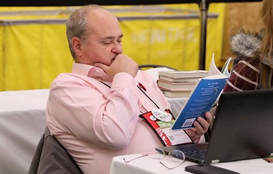
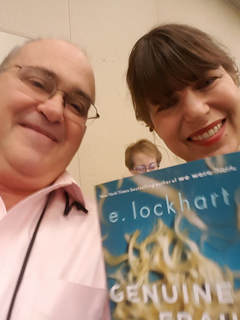
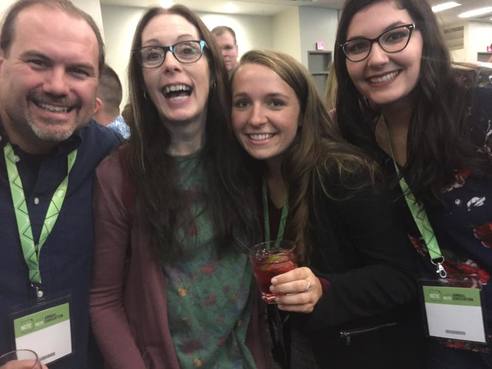
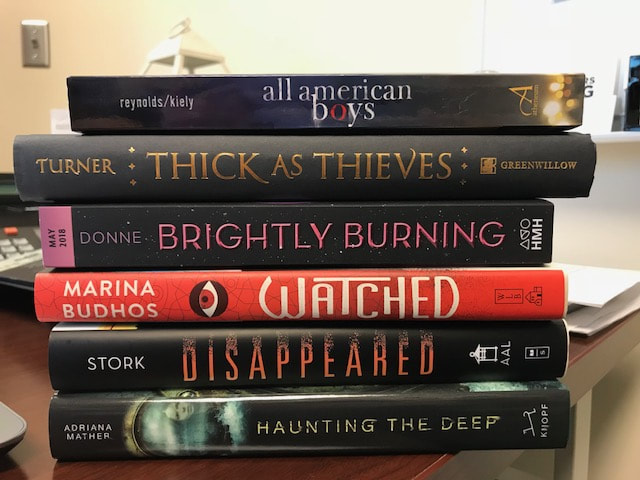
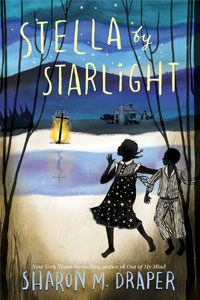
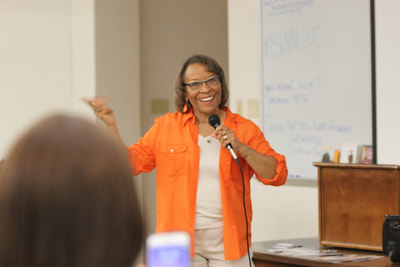
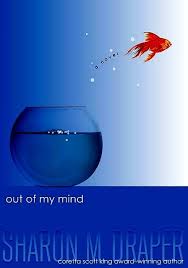

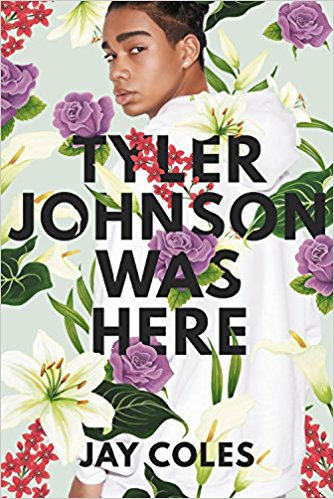
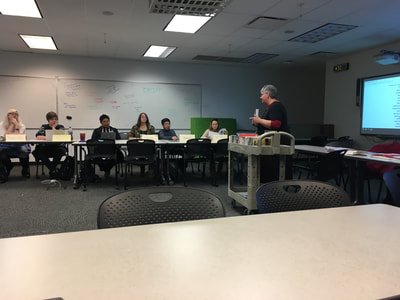
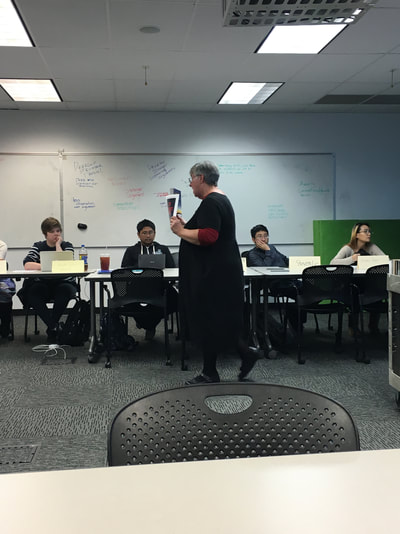
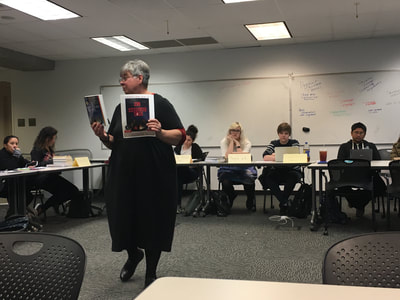
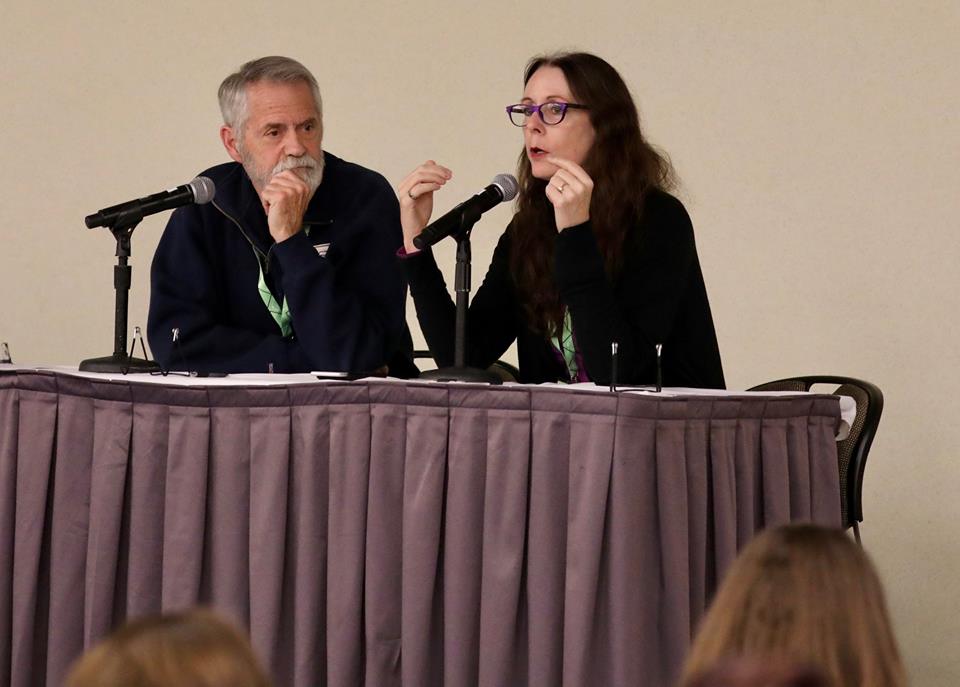
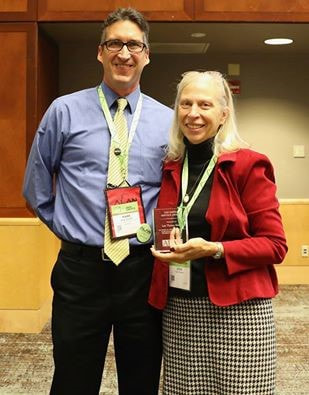
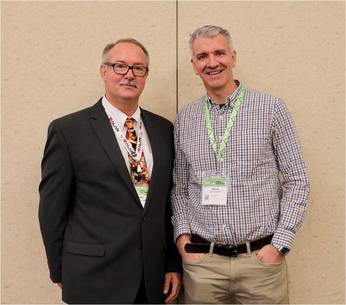
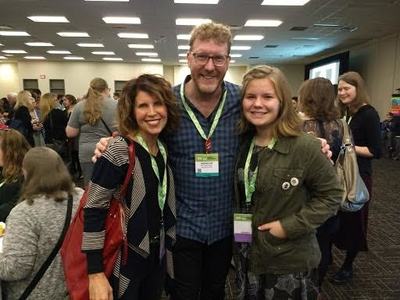
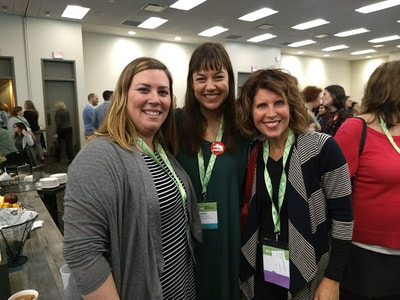
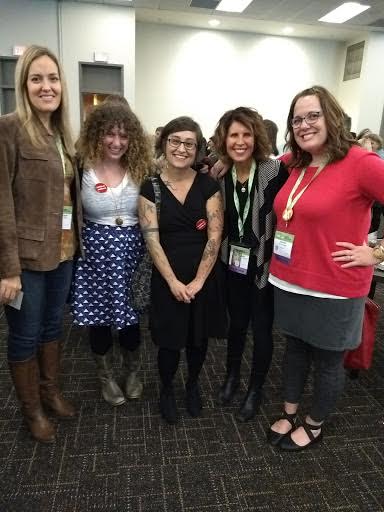
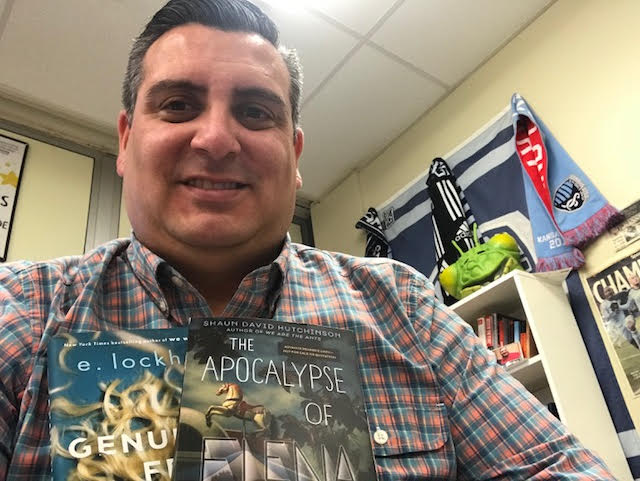
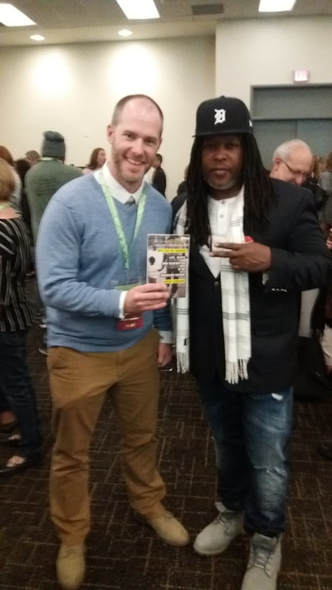
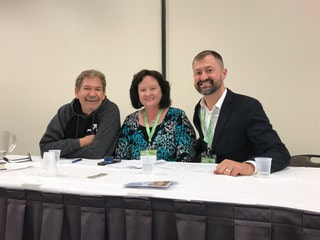
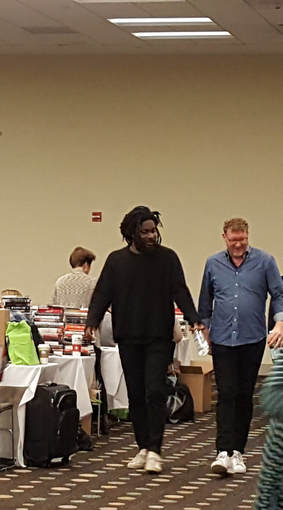
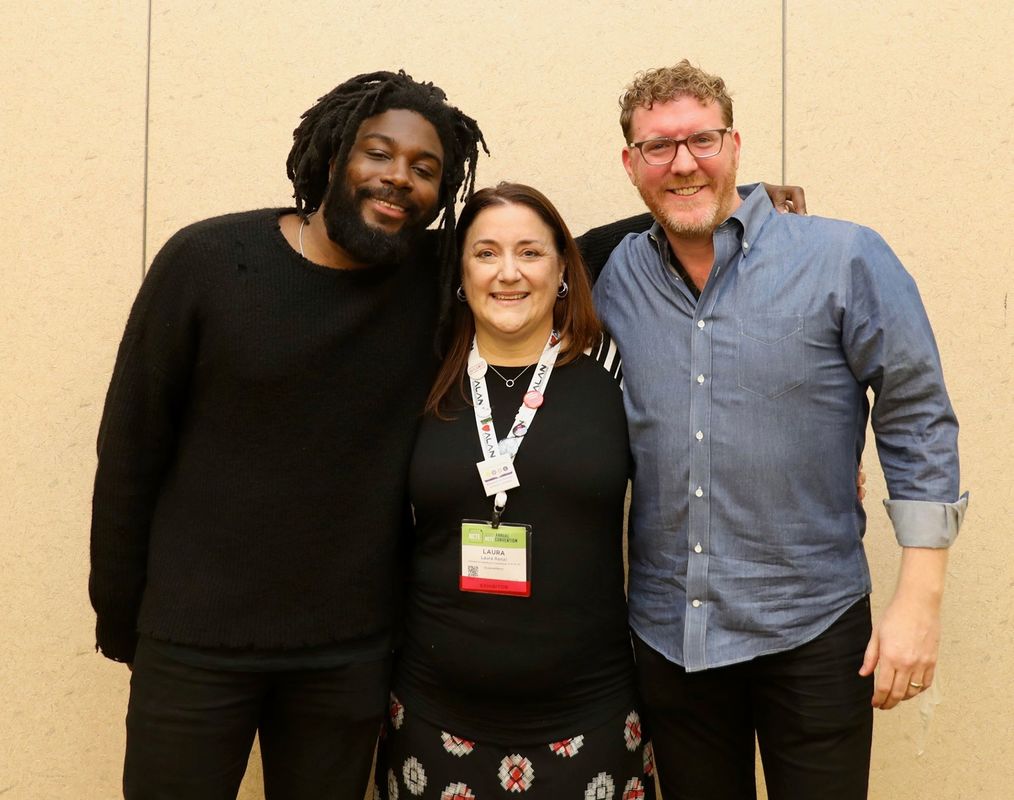
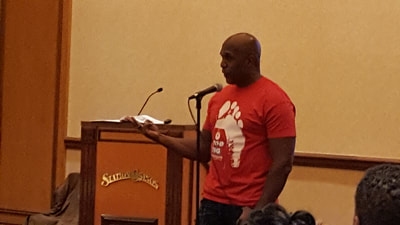
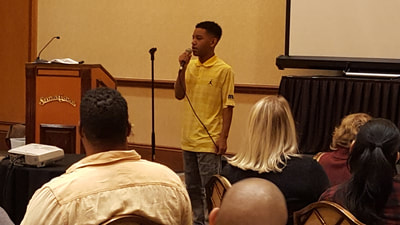
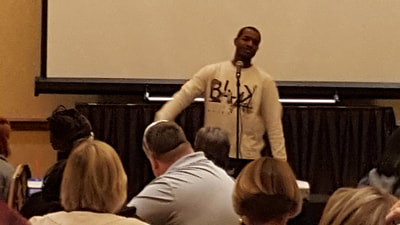
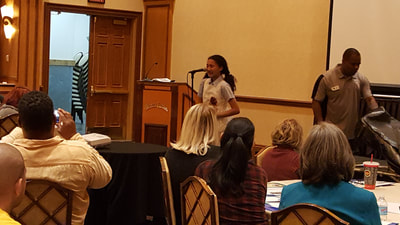
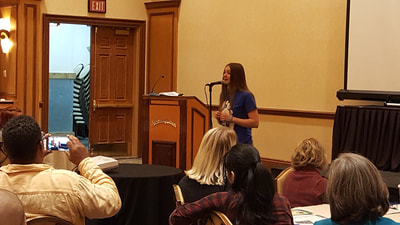
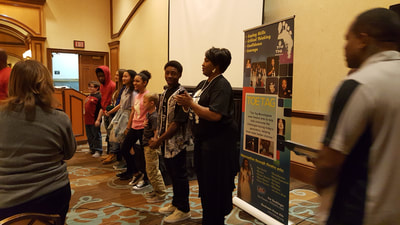
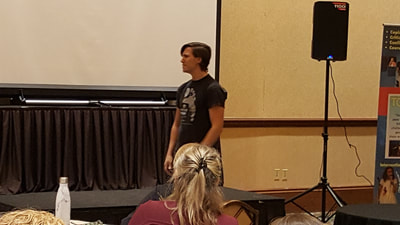

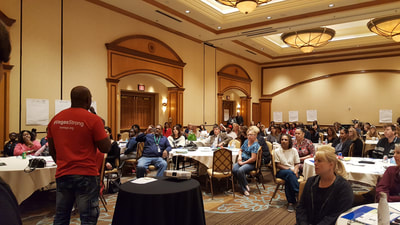
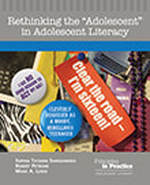
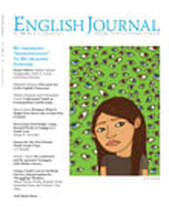
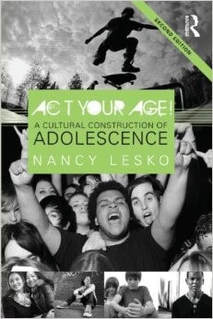
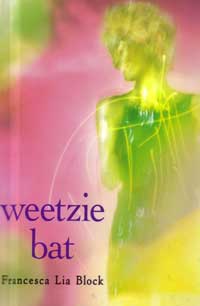
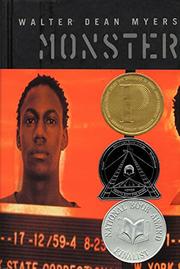

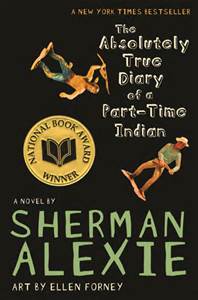
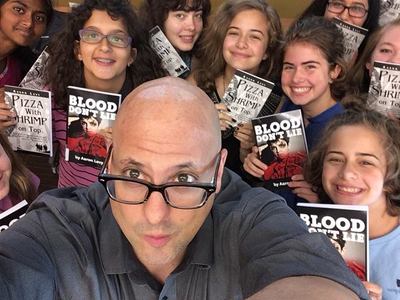
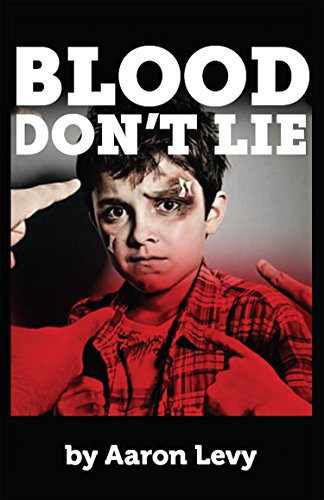
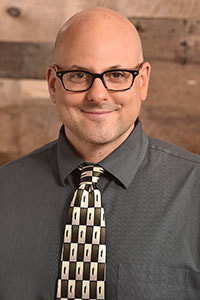
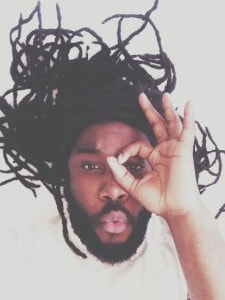

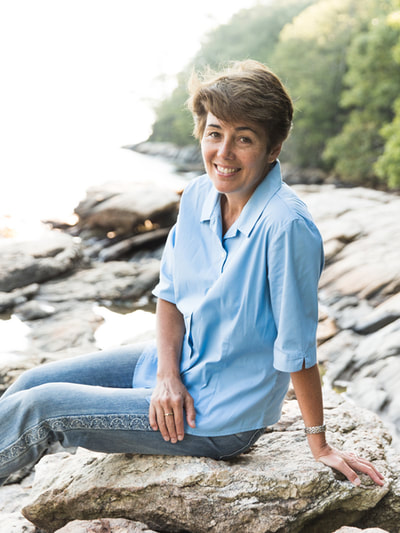
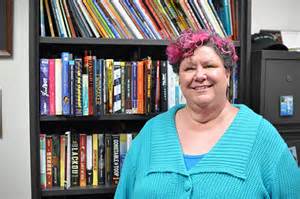

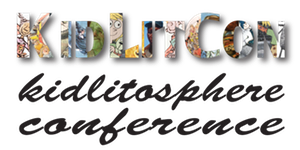
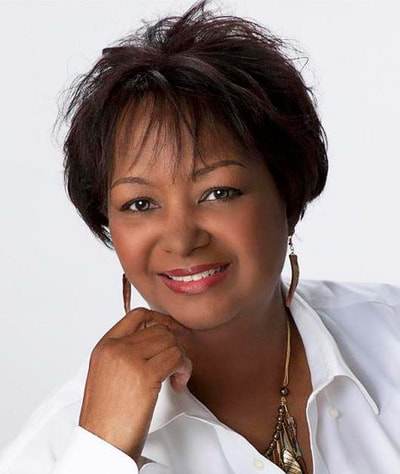
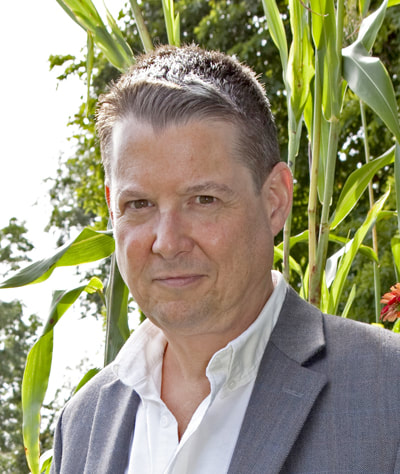

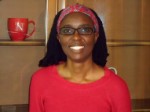
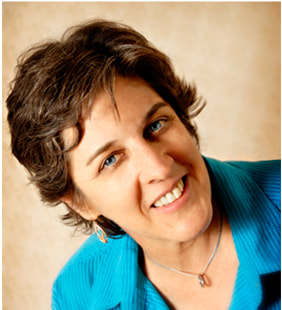
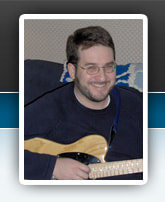
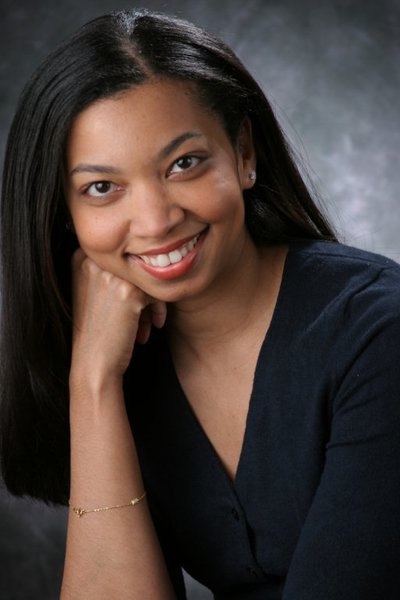

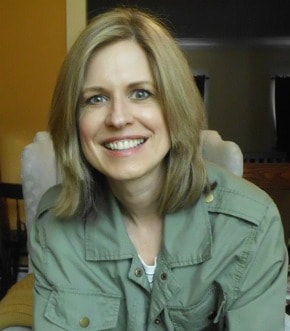
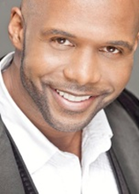
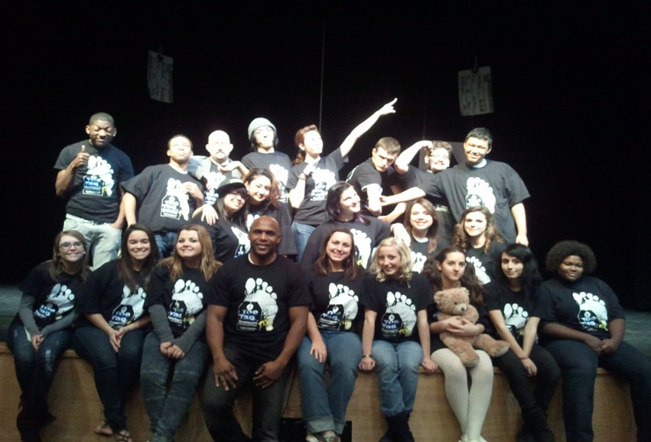
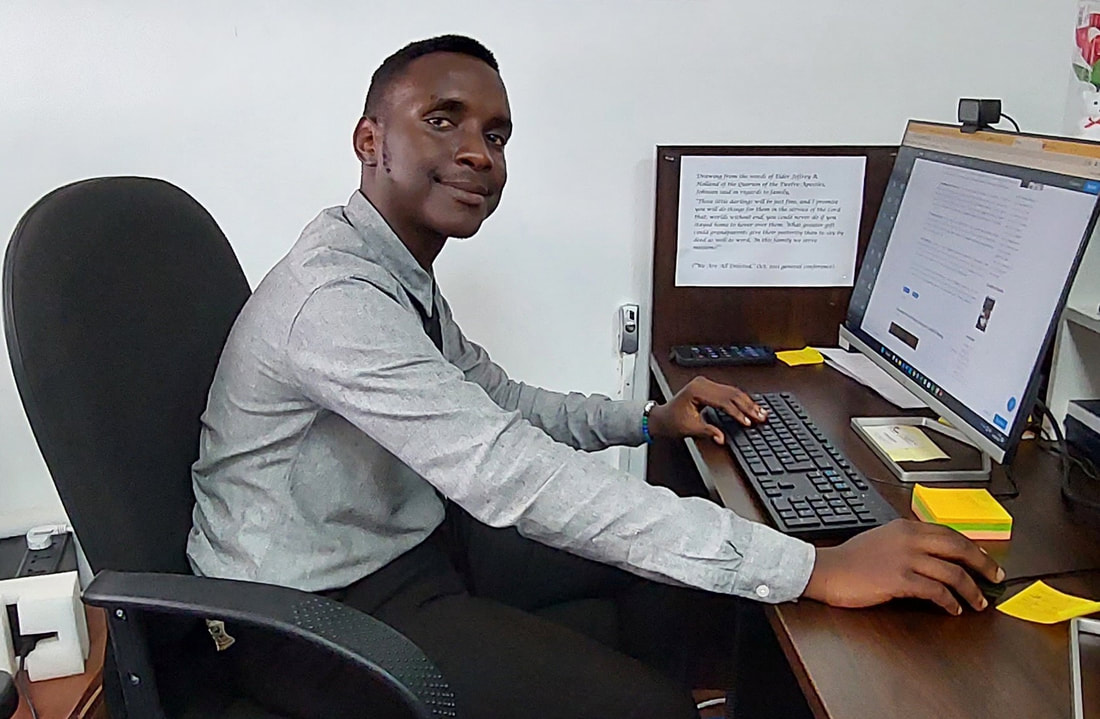
 RSS Feed
RSS Feed